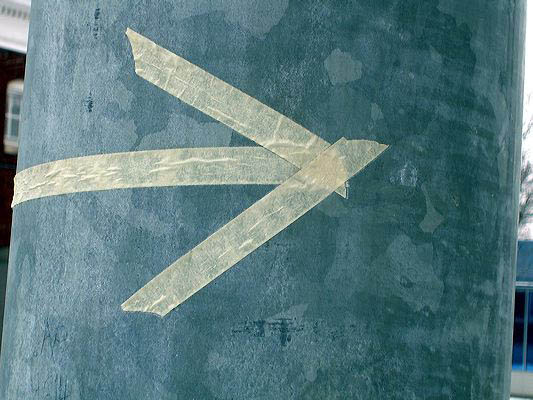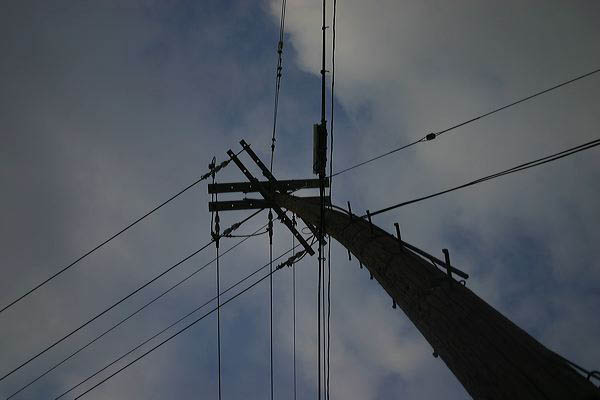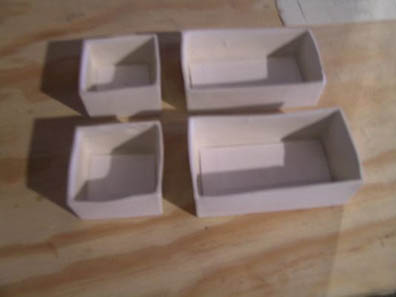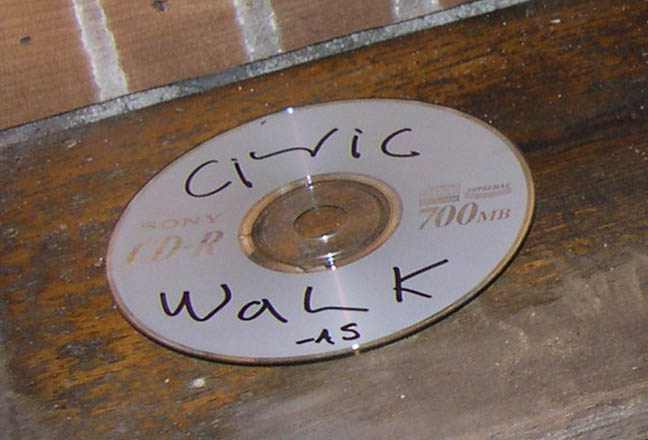Towne Club
2005


Walking Papers
2005The walks collected and presented in Walking Papers were the result of the Civic Studio participants' ongoing discussion on the meaning and created definitions of "space." The projects are bound by a shared knowledge gained through study of both public art and theories of public space. Each walk is, however, informed by the individual participant's own questions about public space.
Some of the walks are focused on a particular goal and present very specific instructions for utilizing the act of walking as a tool for understanding spatial issues. Some of the walks use fantasy and impossibilities to contextualize "space" in new and interesting ways.
(Anthony Stepter, Project Curator)
The walk instructions can be viewed in the original tabloid PDF format.
Student Walks

Everyday Dérive Overlay
Think of a walk that you take every day or frequently. Consider the direction(s) you move in, and the distance you move in those directions. Starting at the Rock Shop with that normal walk in mind (as in muscle memory), take the same walk in this new place.
Where do you end up? Are there barriers that prevent you from doing the walk? If there are barriers, how did you/could you oversome them?
(Rachael Jacques)

Looking Up
Simply pick a start location, lay down flat on the ground and look up. Take in a perspective that you typically don't see. Every 5-10 steps repeat. You will be amazed at all the things you don't typically see even in an area that you are familiar with. Stop or start wherever you like. I suggest taking a camera or a sketch book and documenting and framing up the interesting things you will find.
(Annamarie Buller)

Untitled Walk
This walk is a self contained porcelain devise. Small and delicate porcelain boxes are given to the walker. The piece of paper inside designates a time frame for the walk to take place and the other direction is to collect. The walker goes out on his or her own path and is guided to discover small objects to collect and place inside their box.
(Becky Siegwart)
A Walk to Induce Empathy and Make Noise
Purposes: Induce empathy from strangers. Make a recordable unique noise of ice falling to ground. Make walker realize that cold weather is much worse when covered in frozen water.
Walk to the river wearing a wetsuit (be sure it is chilly, below 32ºF outside).
Jump in.
Duck below the water's surface. Stay in the water until your body is covered in a thin layer of ice.
Let it flake off the frozen suit as you walk. A soft tinging noise will be made.
(Jenny Pope)

Walking In Rhythm
This walk is an audio based experiment in perceptions of space. Several audio clips have been combined into an approximately 15 minute audio file that will serve as a guide for the walk.
The walk can take place most anywhere. However, it is ideal for neighborhoods. The walker is to listen to the file on headphones and wait for the first clip to begin.
The walker will then begin to walk away from the shop, actively seeking sites or happenings in the area that fit the mood that the song/ audio clip has inspired within them.
If the walker has a camera, each image/ occurence that they find to match the mood of the song can be documented.
The purpose of this exercise is to highlight the multi-functional nature of a given area. It is very easy to form a single identity for a neighborhood/ area/ space and this walk encourages the walker to look for characteristics of the space that match the shifting and diverse moods of the audio.
Download the audio at http://www2.gvsu.edu/~steptera/civicwalk.html
(Anthony Stepter)
Roll To The River Like Water
1. Start anywhere on Plainfield.
2. Be water and flow to the River by walking.
tips:
Be broadly guided by getting to the River. At each point in the walk, be guided by how water would flow on your immediate topography. Bring along some water. If at any point you don't know which way to go, pour a little water on the ground and follow the path it makes. When you get to the River, touch the water with your toe.
(Paul Wittenbraker)